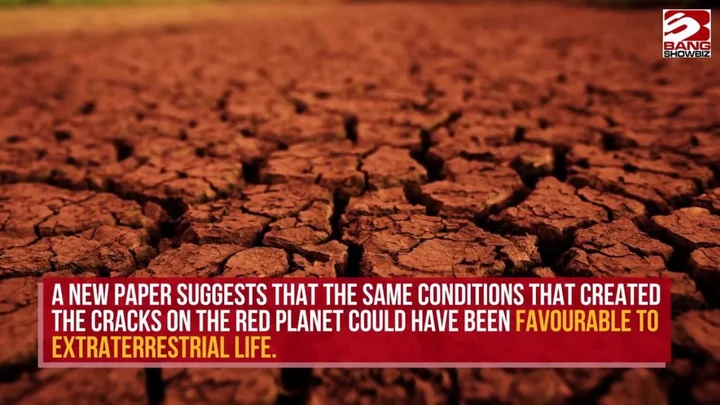
Simulation discovers what personality traits you would need to go to Mars
If the thought of jetting off to Mars to live doesn’t scare you enough, imagine what it would be like going with people whose personalities you cannot stand. To avoid that happening, scientists have come up with a simulation that can determine the right and, importantly, wrong, personality types to send up to colonize Mars. 28 different simulations of colonies on Mars were run as part of the study to establish which type of people stood the best chance of settlement and survival. While the study was published on pre-print server arXiv, it had not yet been peer-reviewed. The study worked on the assumption that there would already be some kind of infrastructure in place, including power, food, air and water being locally produced and available. As part of the model, there would also be regular supply deliveries from Earth. Those behind the simulation gave each agent their own attributes, skills and personalities and let the simulation run as they interacted, socialised and problem-solved together. In the paper, the researchers explained: “Each agent is granted skills associated with their civilian and military occupational specialities consistent with NASA’s Human Factors and Behavioral Performance Element research.” Different personality types included: “Agreeables” – they score low on levels of competitiveness and aggression. “Neurotics” – these people are highly aggressive, competitive, and are much less able to handle routine change or boredom. “Reactives” – they tend to have a “competitive interpersonal orientation”. “Socials” – people who are extroverted and require a lot of social interaction. As for the groups themselves, the numbers within each simulation differed with the lowest amount being 22 individuals. The study found that the presence of neurotics made the team have a worse chance of survival and that these people in particular “suffered during life on the colony”. The researchers: “Martians with the neurotic psychology and a high coping capacity benefit the least from interaction with other Martians, and are penalized the most if they have a low coping capacity. “Our results suggest that this effect is a driver of the Martian population decline, and once minimized or removed, can produce a stable settlement.” A lot to process there if you identify as neurotic. Sign up to our free Indy100 weekly newsletter Have your say in our news democracy. Click the upvote icon at the top of the page to help raise this article through the indy100 rankings.
2023-08-25 23:56

A new 'Antarctica' accent has been discovered by scientists
Antarctica might be the only continent on Earth with no natural human habitation, but it’s emerged that an “Antarctica accent” is very much a thing. Despite having no locals, thousands of scientists have made up an ever-changing population in research stations over the years. The continent is so isolated and the level of interaction between researchers is so intense, that a common accent is beginning to emerge there despite people coming from different parts of the world. At its busiest points in the year during the summer, Antarctica is home to around 5,000 people. Only around 1,000 people live there during the winter months. The idea of accents changing due to human interaction on Antarctica is no different to the phenomenon seen throughout history at a glacial pace. However, given the very specific sample size, it’s an opportunity for scientists to study it at a much quicker rate and on a much smaller scale. Experts at the Ludwig Maximilian University of Munich published a study in 2019 which focused on the change in accents observed in 11 people who took part in the British Antarctic Survey. @human.1011 There’s an Antarctic Accent! #language #linguistics #english #antarctica Of the 11 who were studied, eight came from England, one from the US, one from Germany and one from Iceland. Their voices were recorded every six weeks, and the team found that over time they developed longer vowel sounds. There was a physical change too, with participants pronouncing the “ou” sound in the front of their mouths rather than the back of their throats. Speaking to IFL Science, Jonathan Harrington, study author and Professor of Phonetics and Speech Processing at the Ludwig-Maximilians University of Munich said: "The Antarctic accent is not really perceptible as such – it would take much longer for it to become so – but it is acoustically measurable. "It's mostly an amalgamation of some aspects of the spoken accents of the winterers before they went to Antarctica, together with an innovation. It's far more embryonic [than conventional English accents] given that it had only a short time to develop and also, of course, because it's only distributed across a small group of speakers.” Sign up for our free Indy100 weekly newsletter Have your say in our news democracy. Click the upvote icon at the top of the page to help raise this article through the indy100 rankings.
2023-08-24 20:45
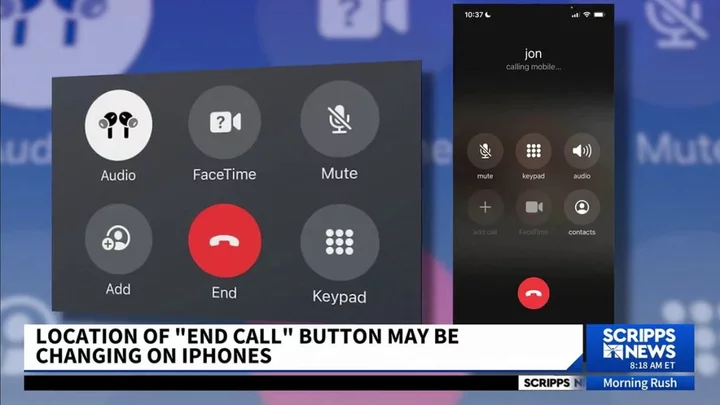
Apple issues danger warning to iPhone users
The Apple iPhone is one of the most popular mobile devices in the world, but the company has issued a new danger warning to users that could help save lives. Popular among those particularly in the West, iPhones are prevalent in most people’s everyday lives, ever since the first one was released in June 2007. However, Apple has issued a stark warning for those who leave them charging overnight, highlighting a risk of fire, electrocution and injury. The warning by Apple comes under its updated user guide under the article titled, “Important safety information for iPhone” in which it is warned that charging phones over long periods poses a risk. It read: “Use common sense to avoid situations where your skin is in contact with a device, its power adapter, or a wireless charger when it’s operating or connected to a power source for long periods of time. “For example, don’t sleep on a device, power adapter, or wireless charger, or place them under a blanket, pillow, or your body, when it’s connected to a power source. “Keep your iPhone, the power adapter, and any wireless charger in a well-ventilated area when in use or charging. Take special care if you have a physical condition that affects your ability to detect heat against the body.” The company confirmed consumers can use “‘Made for iPhone’ or other third-party cables” that are compliant with relevant safety regulations. But, it added: “Other adapters may not meet applicable safety standards, and charging with such adapters could pose a risk of death or injury.” Sign up to our free Indy100 weekly newsletter Have your say in our news democracy. Click the upvote icon at the top of the page to help raise this article through the indy100 rankings.
2023-08-24 19:54
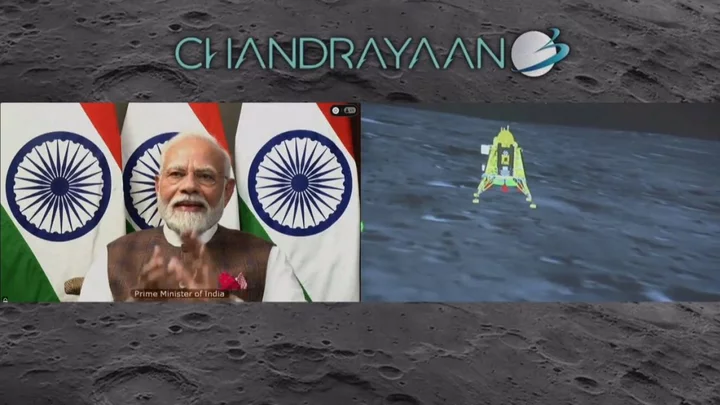
Watch: India becomes first country to make historic moon landing on planet's south pole
This is the moment India made its historic first landing on the moon's south pole, just days after Russia's attempt ended in a crash. India's attempt to land its Chandrayaan-2 mission near the south pole in 2019 was unsuccessful, but the Chandrayaan-3 mission went off without a hitch. The lander, known as Vikram, touched down at 13:34 BST. It's thought no attempts have been successful so far because of its rocky landscape, making it difficult to find somewhere to land safely. Sign up to our new free Indy100 weekly newsletter
2023-08-23 20:53

Toilet invented that is so slippy nothing can leave skid marks
A 3-D-printed toilet has been invented and the surface is so slippery that nothing can leave a mark on it. Cleaning the toilet has to be one of the grimmest household chores, but thanks to new material, you may never have to scrub a loo again. The toilet is the invention of Yike Li at Huazhong University of Science and Technology in Wuhan, China, who, alongside colleagues, invented a toilet whose surface is so slippery that nothing stains it and uses less water for each flush. The team created a prototype of the toilet around 10 times smaller than a real one. It was made using 3D printing technology, where particles of plastic and hydrophobic sand grains were fused together with lasers. The surface of the toilet was lubricated with a type of silicon oil that also penetrated the surface due to the complex structure of the material. The team tested the toilet with a variety of substances, including honey, yoghurt, muddy water as well as synthetic faeces. They found that none of the substances stuck to the toilet bowl. Amazingly, the toilet was just as slippery after having been rubbed with sandpaper over 1,000 times, which Li believes is due to the oil being able to penetrate the material of the toilet. Li believes the technology would be suited for settings in which a toilet gets a lot of use, such as on modes of transport and in public toilets. He explained: “The reduced flushing volume would result in less wasted water during transportation to the processing facilities, thereby saving transportation costs.” But, before that can happen, Li says the technology needs to be adapted for use on a full-sized toilet and also needs to be cheaper to make. You can see the toilet in action below courtesy of New Scientist. Nothing can stick to this 3D-printed slippery toilet youtu.be Sign up to our free Indy100 weekly newsletter Have your say in our news democracy. Click the upvote icon at the top of the page to help raise this article through the indy100 rankings.
2023-08-22 20:23
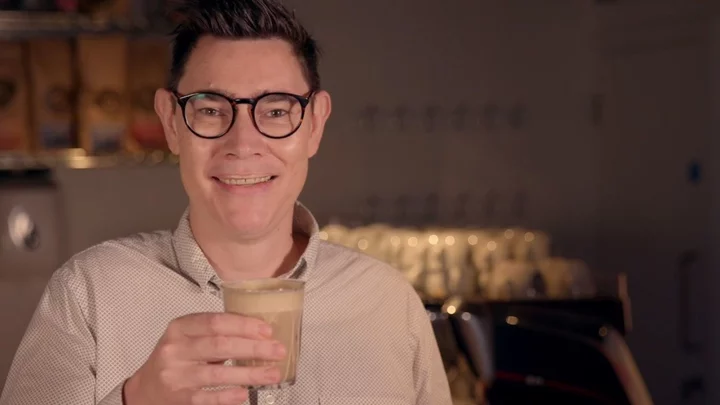
Why you should delay your first coffee of the morning
For a lot of people, coffee is one of the few things that gets them out of bed and out the door in the mornings. But while it’s tempting to whack the kettle on first thing, a health expert has stated that delaying our first coffee of the day could be much more beneficial to our health. Nutritionist Gabi from The Fast 800 urged people to wait at least 90 minutes before getting their first coffee hit [via the Mirror]. Gabi claims that we can all boost energy levels by doing so. In fact, eating on an empty stomach could even cause your body to enter stress mode and release hormones like adrenaline and cortisol. "Supporting your morning coffee routine with some smart practices can be a game changer for your overall well-being,” Gabi said. She recommends drinking water, as well as eating a meal packed with fibre and protein to balance sugar levels. “Elevated blood sugar can trigger inflammation and set us up to be on a blood sugar roller coaster for the rest of the day, thereby tanking our energy supply,” the health guru said. "Within the first hour of waking, our cortisol levels ideally acutely rise and fall in a response known as our cortisol awakening response. This rise and fall of cortisol represents a healthy nervous system and actually has a big influence on our immune health and even the risk of autoimmune development." She also states that delaying coffee for a minimum of 90 minutes promotes high energy levels. Gabi said: "Morning light exposure is a huge regulator of circadian rhythm and light exposure triggers the healthy release of cortisol in the morning to support the body’s natural rhythm. Getting natural light exposure within the first hour or so of waking is a great way to support optimal hormone balance." It comes after it was revealed that the drink also gives us an extra ‘special boost’ as well as just a caffeine hit. Scientists have claimed that the act of drinking a cup of joe gives the body a lift, making us more alert, which can’t be replicated merely with caffeine. Sign up for our free Indy100 weekly newsletter Have your say in our news democracy. Click the upvote icon at the top of the page to help raise this article through the indy100 rankings.
2023-08-21 17:22
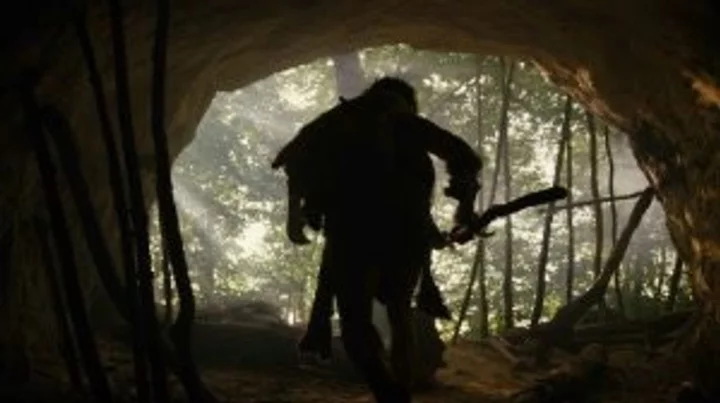
Scientists discover that neanderthals were getting high on psychedelics millions of years ago
Neanderthals liked to unwind after a hard day’s work hunter gathering by consuming psychoactive drugs, a new study has found. A discovery of human hair strands at a burial site in Menorca, Spain has given us evidence of drug use in prehistoric times. Research was put forward in a new study published in the journal Scientific Reports, and they shine new light on drug use throughout history. The findings uncovered a number of different alkaloid substances which came from nightshade plants. They contain scopolamine and atropine which can cause hallucinations and out-of-body experiences, while ephedrine is a stimulant. The cave also contained boxes patterned with psychedelic decorations, which could well have been decorated while neanderthals were under the influence. Elisa Guerra-Doce is an associate professor of Prehistory at the University of Valladolid and lead author of the study. Guerra-Doce told The New York Times: "These findings are so singular. "Sometimes when people think about drugs, they think it's a modern practice. These results tell a different story." Ethnobotanist Giorgio Samorini, who wasn’t involved in the study, also told the publication: "This was not a profane purpose of 'searching for a high' but more generally the search for existential meaning that has been largely lost to time.” Sign up for our free Indy100 weekly newsletter Have your say in our news democracy. Click the upvote icon at the top of the page to help raise this article through the indy100 rankings.
2023-08-18 21:26

Instagram users are not happy with new likes feature
From Twitter being rebranded as X, to Meta who have rivalled this with their new Threads platform, there's been quite a few changes to social media this year. One of those recent changes also includes Instagram’s new-like animation which applies to those who updated the app. It means that when you like something on Instagram, the large heart will then appear in the area where you double-tapped on the photo and then the heart flies upwards off the screen. Of course, when it comes to social media updates, no one is a fan of change and Instagram users made this clear on X, formerly known as Twitter. Here is a compilation of reactions who all shared they weren't happy with the new like update, as one declared the feature "sucks," though this update did result in some amusing memes too: Unfortunately for those who updated the app, there is no way to change the like option back to the original but those who haven't updated Instagram can avoid the new feature if they opt out of auto-updates on Instagram. Sign up to our free Indy100 weekly newsletter Have your say in our news democracy. Click the upvote icon at the top of the page to help raise this article through the indy100 rankings.
2023-08-16 20:29

Scientists discover continent that had been missing for 375 years
Geoscientists discovered a continent that had been hiding in plain sight for almost 375 years. Historically, there's been speculation about whether a continent known as Zealandia or Te Riu-a-Māui in the Māori language exists. According to TN News, Zealandia is 1.89 million square miles in size. It was part of a supercontinent called Gondwana, which included most of Western Antarctica and Eastern Australia, over 500 million years ago. It was first said to be first discovered in 1642 by Dutch businessman and sailor Abel Tasman, who was desperate to uncover the "Great Southern Continent". Despite failing to find the new land, he met the local Māori, who were initially displeased by his arrival. However, they went on to provide valuable information about the surrounding land, including the existence of a large landmass to the east. Sign up for our free Indy100 weekly newsletter It wasn't until 2017 that geologists discovered the continent had been hiding in plain sight all along. Scientists agreed on the existence of Zealandia, which started to "pull away" from Gondwana for reasons scientists are still trying to understand. Most of the newfound continent is underwater and has been used as an example by geologists at the Zealand Crown Research Institute GNS Science on how something "very obvious" can take a while to uncover. "[It's] a process which we don't completely understand yet, Zealandia started to be pulled away," Tulloch explained. His colleague Nick Mortimer, who led the study, joked that it was "kind of cool" before explaining: "If you think about it, every continent on the planet has different countries on it, [but] there are only three territories on Zealandia." Have your say in our news democracy. Click the upvote icon at the top of the page to help raise this article through the indy100 rankings.
2023-08-14 22:21

Experts have pinpointed exactly when society will collapse
A prediction about when society is most likely to collapse, made by scientists in the 1970s, has resurfaced – and it looks pretty bleak. Scientists at the Massachusetts Institute of Technology (MIT) used a computer to model patterns like population, natural resources and energy usage. The study, published by Club of Rome, picked out when these factors could hit “limits to growth”, which they said could lead to the downfall of modern life as we know it. They think we’ve got fewer than two decades left, with collapse due in 2040. Gulp. Sign up to our free Indy100 weekly newsletter At the time, the report wasn’t given much credence. But a similar study was carried out in 2009, and came up with similar results. Published by American Scientist, the more recent study found that the model’s results were “almost exactly on course”. "It is important to recognise that its predictions have not been invalidated and in fact seem quite on target. We are not aware of any model made by economists that is as accurate over such a long time span," the study said. And to make matters worse, Dutch sustainability researcher Gaya Herrington concurred with the prediction in 2021. Speaking to The Guardian, Herrington said: “From a research perspective, I felt a data check of a decades-old model against empirical observations would be an interesting exercise.” Herrington found that data aligned with the predictions made back in 1972, which had a worse case scenario of economic growth coming to halt at the end of this decade, and collapse around 10 years later. Thankfully, there was a reason to be cheerful too. She added: “The key finding of my study is that we still have a choice to align with a scenario that does not end in collapse. "With innovation in business, along with new developments by governments and civil society, continuing to update the model provides another perspective on the challenges and opportunities we have to create a more sustainable world.” Have your say in our news democracy. Click the upvote icon at the top of the page to help raise this article through the indy100 rankings.
2023-08-14 19:27

AI could soon be used to treat cancer in the NHS
Artificial intelligence could soon be used to perform radiotherapy to treat certain cancers for the first time. Draft guidance from the National Institute for Health and Care Excellence (Nice) has given approval to nine AI technologies for performing external beam radiotherapy in lung, prostate and colorectal cancers, which could save radiographers hundreds of thousands of hours and help relieve pressure on radiotherapy departments. Currently therapeutic radiographers outline healthy organs on digital images of a CT or MRI scan by hand so that the radiotherapy does not damage healthy cells by minimising the dose to normal tissue. Nice found that using AI to create the contours could free up between three and 80 minutes of radiographers’ time for each treatment plan, and that AI-generated contours were of a similar quality to manually drawn ones. Nice said that the contours would still be reviewed by a trained healthcare professional. It comes after a study found AI was safe to use in breast cancer screenings with evidence growing that it can be more effective in detecting cancers. Sign up to our free Indy100 weekly newsletter Meanwhile, Nice said it was also examining the evidence for using AI in stroke and chest scans. Dr Sarah Byron, the programme director for health technologies at Nice, said using AI could help reduce waiting lists. She added: “NHS colleagues working on the frontline in radiotherapy departments are under severe pressure with thousands of people waiting for scans. “The role imaging plays in radiotherapy treatment planning is quite pivotal, so recommending the use of AI technologies to help support treatment planning alongside clinical oversight by a trained healthcare professional could save both time and money. “We will continue to focus on what matters most and the recommendations made by our independent committee can help to bring waiting lists down for those needing radiotherapy treatment.” The health secretary, Steve Barclay, welcomed the announcement. He said: “It’s hugely encouraging to see the first positive recommendation for AI technologies from a Nice committee, as I’ve been clear the NHS must embrace innovation to keep fit for the future. “These tools have the potential to improve efficiency and save clinicians thousands of hours of time that can be spent on patient care. Smart use of tech is a key part of our NHS long-term workforce plan, and we’re establishing an expert group to work through what skills and training NHS staff may need to make best use of AI.” Charlotte Beardmore, the executive director of professional policy at the Society of Radiographers, welcomed the draft guidance but said it was not a replacement for staff and caution was needed. “It is critical there is evidence to underpin the safe application of AI in this clinical setting,” she said. Using AI would still require input by a therapeutic radiographer or another member of the oncology multi-professional team, she added. “Investment in the growth of the radiography workforce remains critical.” Science is pretty amazing. Have your say in our news democracy. Click the upvote icon at the top of the page to help raise this article through the indy100 rankings.
2023-08-11 18:28

Man 'projected to live to 200' has to use machine to generate tears
The man who is 'ageing backwards' Bryan Johnson has revealed he now uses a machine to generate tears after his body stopped producing them. Johnson, who has the 'biological age of an 18-year-old' has gone viral for going to extremes to achieve peak health, however, it would seem everything isn't going so smoothly with his eyesight. "I have a dry eye condition which we found in our routine [doctor] visit", he tells the camera. He then films himself using the FDA-approved iTear100, which massages the side of his nose to stimulate tear ducts. Sign up to our new free Indy100 weekly newsletter
2023-08-10 22:49
